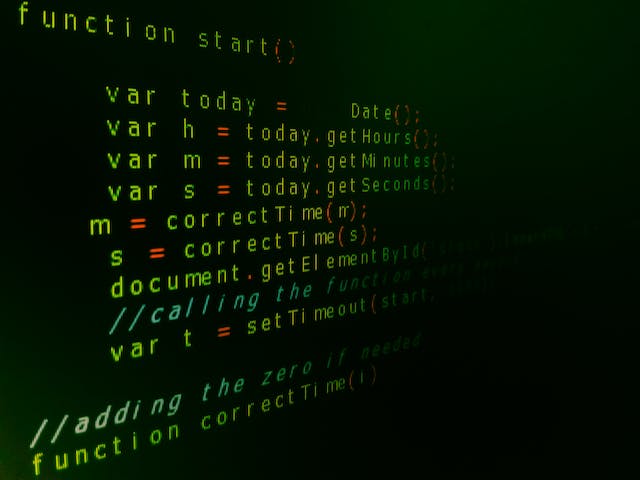Backend development is the process of creating the part of a website or web application that runs on the server and handles the logic, data, and functionality of a product. Backend developers are responsible for writing code that connects the frontend (what users see and interact with) to the backend (what users don’t see but make everything work. Backend developers also ensure that the product is secure, scalable, and performant.
In this blog post, we will cover the following topics:
- What are the skills and tools required for backend development?
- What are the benefits and challenges of backend development?
- How to learn backend development and find resources?
- How to become a backend developer and find opportunities?
Skills and Tools for Backend Development
The basic skills and tools for backend development are:
- A programming language: This is the language that you use to write the server-side code of your product. There are many languages to choose from, such as Python, Java, C#, PHP, Ruby, Node.js, and more. Each language has its own advantages and disadvantages, and you should pick one that suits your needs and preferences.
- A framework: This is a pre-written code package that provides additional features and functionality for backend development. Frameworks help you save time and effort by simplifying common tasks and providing best practices and standards. Some popular frameworks are Django, Spring, ASP.NET, Laravel, Rails, Express, and more.
- A database: This is where you store and manage the data of your product, such as user information, posts, comments, etc. Databases can be relational or non-relational, depending on how they organize and query data. Some common databases are MySQL, PostgreSQL, MongoDB, Firebase, and more.
- An API: This is an interface that allows backend developers to communicate with frontend developers, and vice versa. APIs define how data and requests are exchanged between the server and the client, and how different services and components interact with each other. Some common types of APIs are REST, GraphQL, SOAP, and more.
- Tools: These are software applications that help backend developers with various tasks, such as code editing, debugging, testing, version control, and deployment. Some popular tools are Visual Studio Code, Postman, Git, and GitHub.
Benefits and Challenges of Backend Development
Backend development has many benefits, such as:
- Logic: Backend development allows you to apply your logic and problem-solving skills by creating the core functionality and features of your product.
- Variety: Backend development offers a wide range of projects and challenges, from simple websites to complex web applications, and from data analysis to machine learning.
- Demand: Backend development is in high demand, as every website and web application needs a backend developer to make it work and look good.
However, backend development also has some challenges, such as:
- Complexity: Backend development can be complex and challenging, as you have to deal with different technologies, platforms, devices, and user expectations, and ensure that your product is secure, scalable, and performant.
- Change: Backend development is constantly changing, as new technologies, standards, and trends emerge and evolve. You have to keep learning and updating your skills and tools to stay relevant and competitive.
- Competition: Backend development is highly competitive, as there are many backend developers in the market, and you have to stand out from the crowd and showcase your skills and portfolio.

How to Learn Backend Development and Find Resources
The best way to learn backend development is by doing it. You can start by learning the basics of a programming language, a framework, a database, and an API, and then practice by building simple websites and web applications. You can also use online courses, tutorials, books, and blogs to learn new skills and concepts and follow the best practices and standards of backend development.
Some of the best resources for learning backend development are:
- Coursera: A platform that offers high-quality online courses and certificates on various topics, including backend development, from leading universities and companies.
- freeCodeCamp: A non-profit organization that provides a self-paced and interactive curriculum for learning web development, covering HTML, CSS, JavaScript, and more.
- Roadmap.sh: A website that provides a visual roadmap for learning backend development, covering the skills and tools you need.
- Backend Developer Roadmap: A GitHub repository that provides a visual roadmap for learning backend development, covering the skills and tools you need.
- Dev.to: A community platform that features articles, stories, and insights from the backend development community.
How to Become a Backend Developer and Find Opportunities
To become a backend developer, you need to have a solid foundation of the skills and tools of backend development and a portfolio of projects that demonstrate your abilities and experience. You also need to have a passion for learning and problem-solving, and a willingness to collaborate and communicate with others.
To find opportunities as a backend developer, you can:
- Network: You can network with other backend developers and professionals in the web development industry, and attend events, meetups, and conferences, where you can learn, share, and connect with potential employers and clients.
- Freelance: You can freelance as a backend developer, and offer your services to various clients and projects, and set your own rates and schedule. You can use platforms like Upwork, Fiverr, or Freelancer to find and bid on freelance projects.
- Apply: You can apply for backend developer jobs in various companies and organizations, and showcase your skills and portfolio in your resume and cover letter. You can use platforms like Indeed, LinkedIn, or Glassdoor to find and apply for backend developer jobs.
Conclusion
Backend development is a rewarding and exciting career path that allows you to create websites and web applications that run on the server and handle the logic, data, and functionality of a product. It requires a combination of technical, logic, and soft skills, and a constant learning and improvement mindset. If you are interested in backend development, you can start by learning the basics of a programming language, a framework, a database, and an API, and then build your own projects and portfolio, and find opportunities to work as a backend developer.


Add a Comment
You must be logged in to post a comment